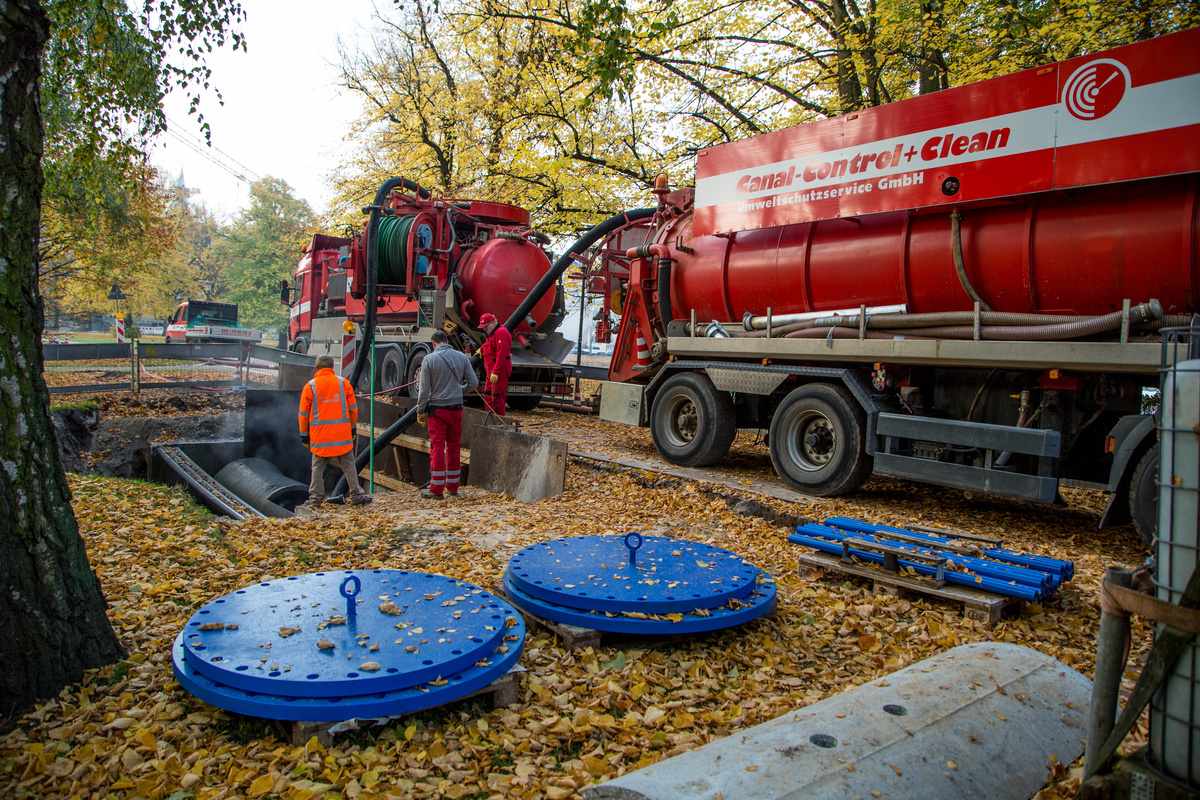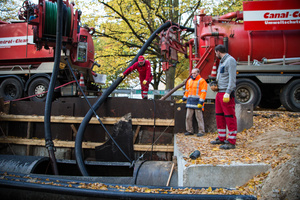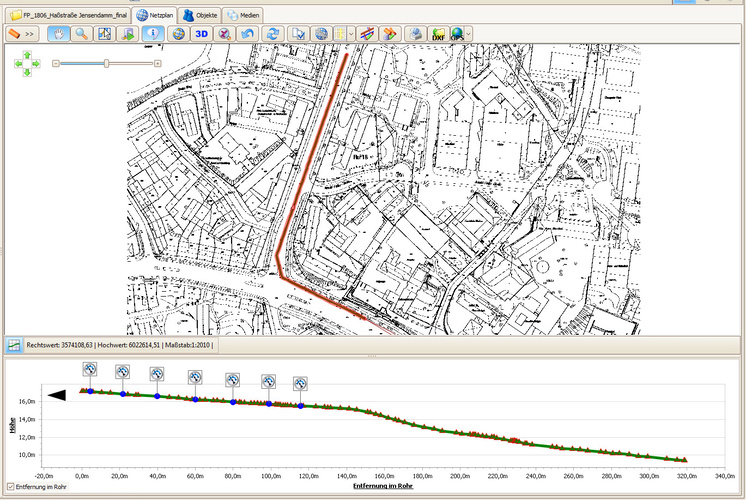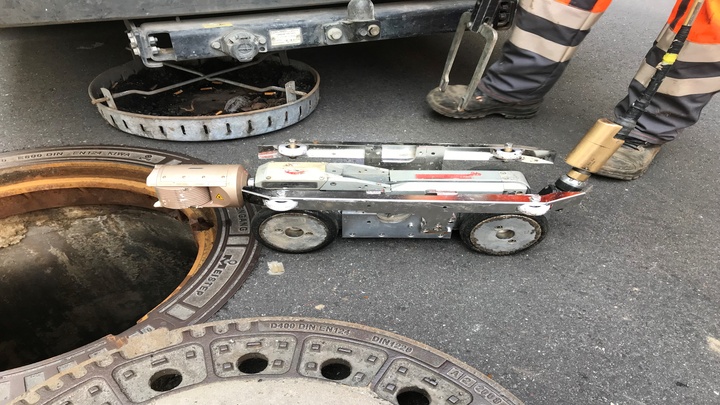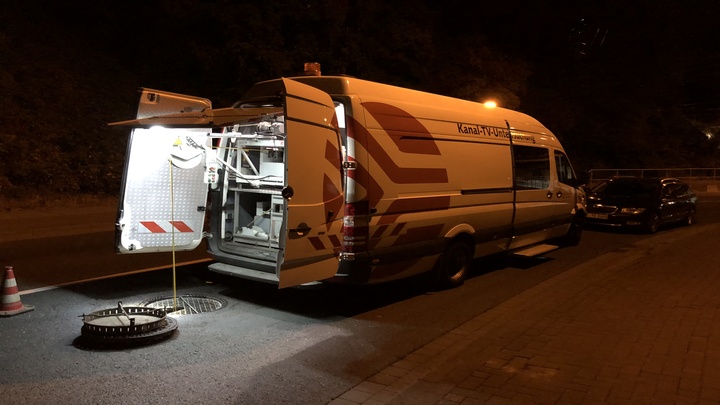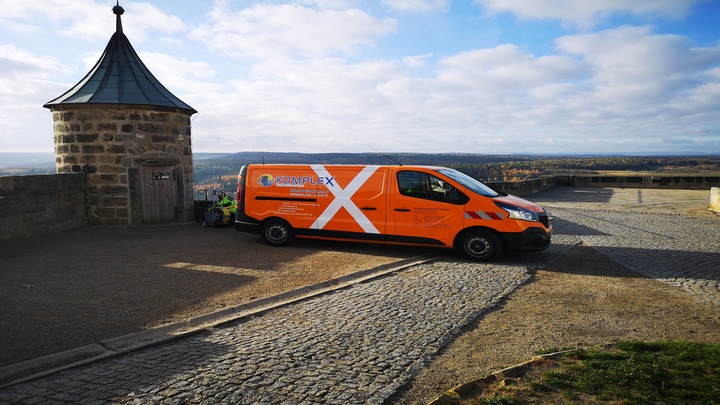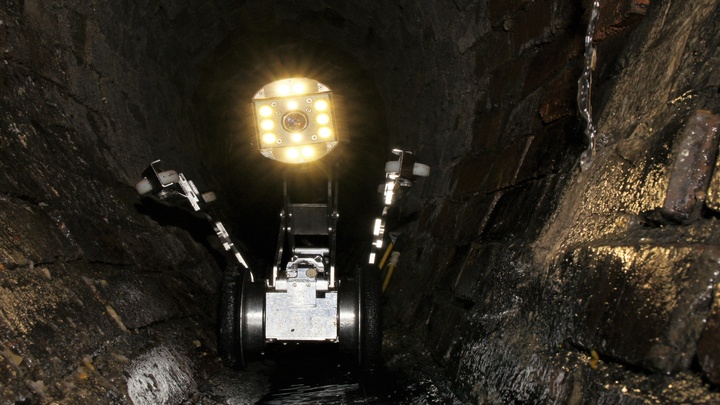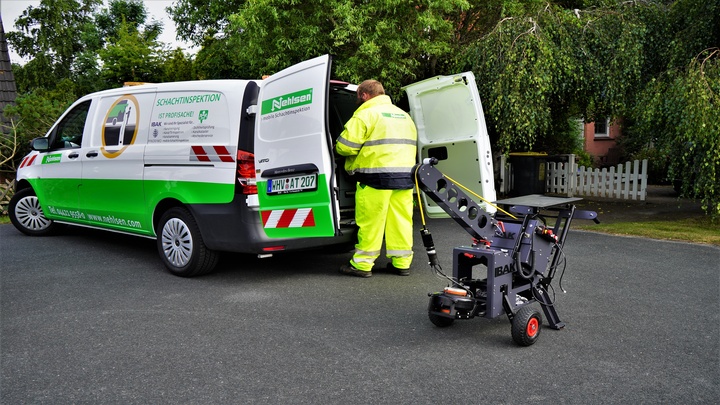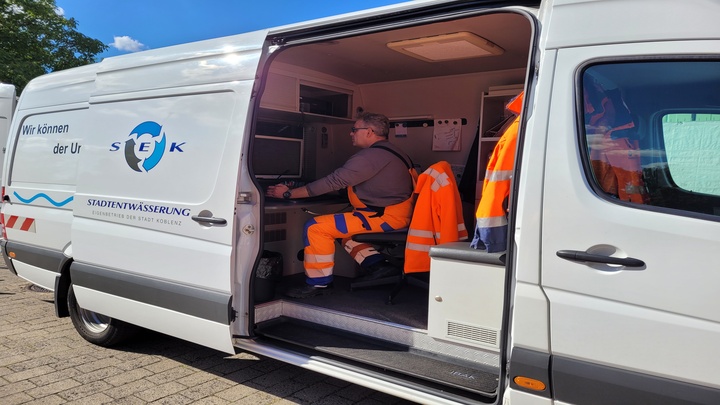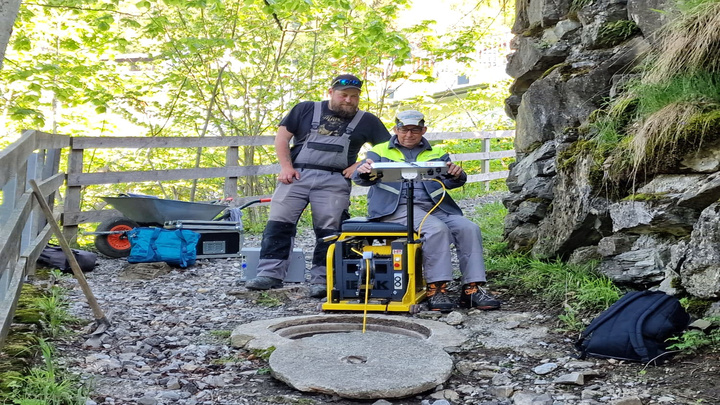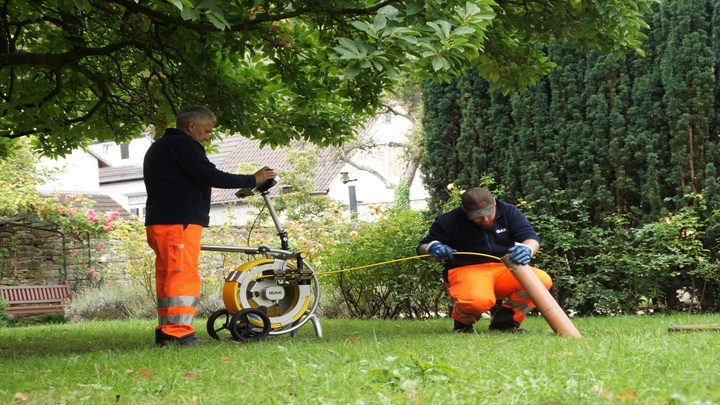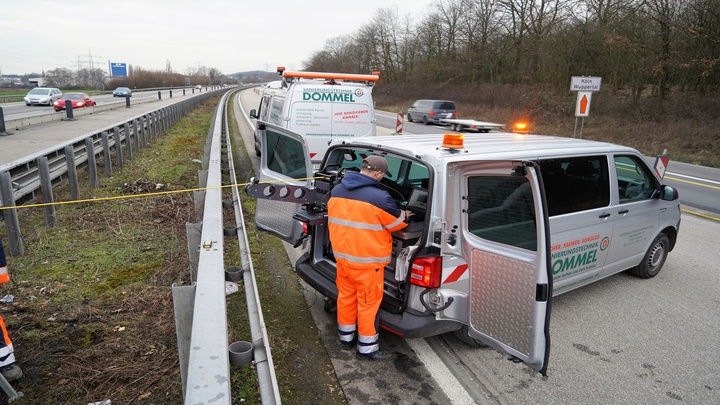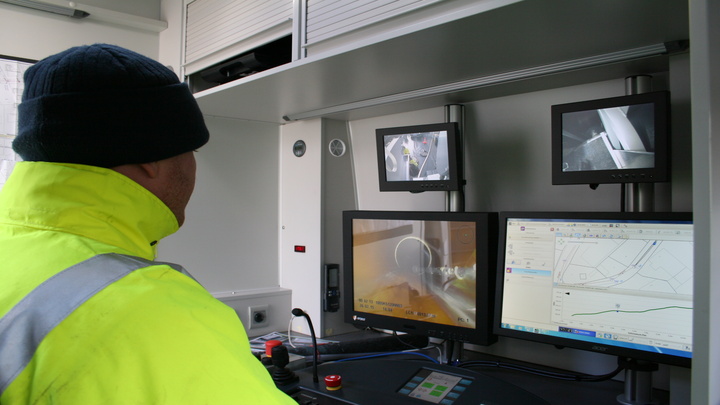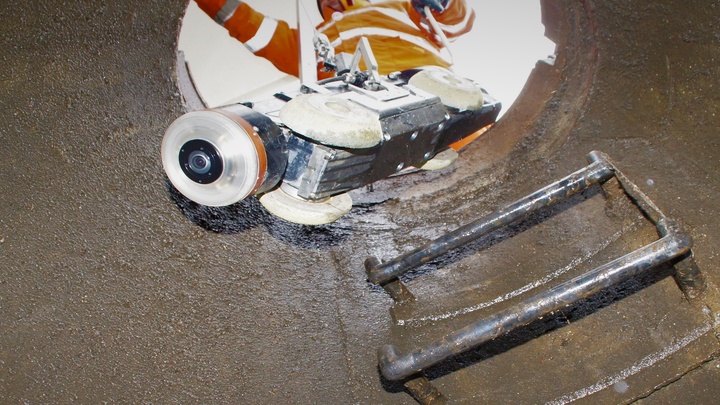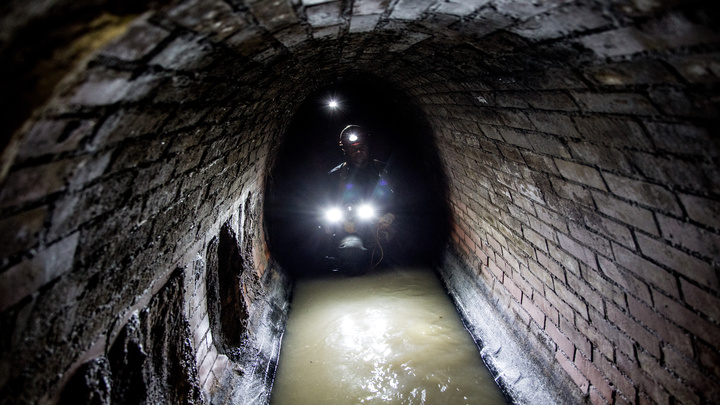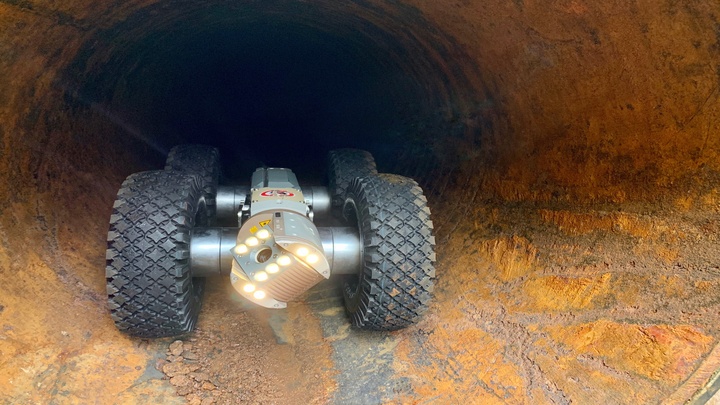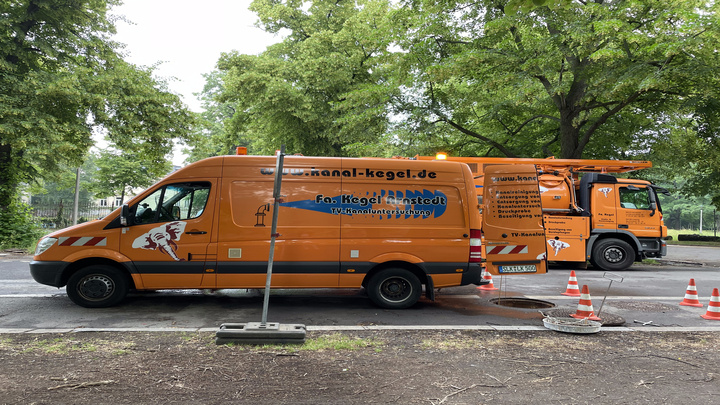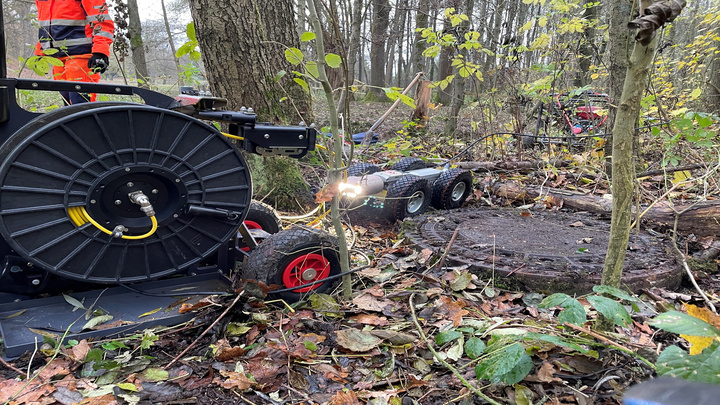3D pipe run measurement of a pressure pipeline
Job
In Kiel's main sewer system, there is a 917 m long pressure pipeline made of DN 1000 prestressed concrete which overcomes a height difference of more than 18 m. In addition, the sewer from the 1970s has two 90° bends. This results in special requirements for cleaning, inspection and geodetically accurate measurements. These tasks were taken on by the sewer specialists of Canal-Control + Clean Umweltschutzservice GmbH in cooperation with GEODOC GmbH on behalf of the Stadtentwässerung Kiel.
Challenge
Sewer pressure pipes are special structures in sewer systems, as they differ from gravity pipes in terms of structural and operational constraints. Pressure pipes have virtually no maintenance and inspection openings. Gradient sections, bends in pipe run and constant full loads make cleaning work and inspection more difficult. Since inspections during operation are usually not provided for during planning and construction, there are long distances between manholes in pressure lines. Pipes of this type are considered maintenance-free according to DWA worksheet 116-2. Nevertheless, Kiel's sewage department wondered what condition the pressure sewers were between one of Kiel's largest pumping stations in the city centre and discharge to the gravity sewer in Feldstrasse in front of Kiel's Gelehrtenschule.
Due to the special features described, an inspection of the entire pipe run was not possible without structural intervention. Kiel's sewage department therefore decided to install two inspection pieces. For this purpose, the pressure pipeline was cut open at two points, in the Ratsdienergarten and in the Jensendamm, by means of excavation pits. This allowed the pressure sewer to be divided into three sections of 37m, 268m and 612m. The positions of the inspection pieces were chosen so as to be located upstream and downstream from the section where a subsidence was suspected, in order to create an access possibility there.
Solution
In contrast to laterals, the location of main sewers can theoretically be determined on the basis of the manholes. These are visible above ground and are usually located in the public domain. It is generally assumed that the sewers run in a straight line between the manholes. However, there are always cases where the run of the sewer deviates from this principle to such an extent that the deviation is of importance for the planning of rehabilitation measures. "In such situations, an exact pipe run measurement is advisable, even in main sewers," says project manager Lüdeke Grasshoff (GEODOC GmbH), confirming the decision of Kiel's sewage department. They decided not only to thoroughly clean and inspect the pressure pipeline, but also to have the exact pipe run recorded at the same time with northing and easting values as well as elevation data (x,y,z coordinates). René Mittelstädt, site manager at Kiel's sewage department, attached particular importance to the elevation data. For this purpose, the executing company Canal-Control + Clean Umweltschutzservice GmbH (CCC) uses hydrostatic height measurement and 3D-GeoSense pipe run measurement. With this innovative technology developed by IBAK Helmut Hunger GmbH & Co. KG, the pipe run is automatically recorded with a 3D sensor integrated into the inspection camera in a single operation together with the inspection. 3D GeoSense measurement is supported by hydrostatic height measurement which enables the elevation to be measured accurately to a centimetre via a water column in the cleaning hose.
The first task was to clean the pressure sewer. "Cleaning of the 612 m long reach without further access with a difference in elevation of 17 m against the direction of flow, i.e. upstream, made corresponding demands on our employees and of course also on the equipment," Lüdeke Grasshoff notes. Here, up to 35 t of sewer sand were brought to the surface daily by several vehicles and almost the entire pipe section was reached. A daily inspection with a high-resolution pan and rotate camera on the IBAK truck to check the cleaning results provided precise information on the cleaning progress and the effectiveness of the methods used. These TV control inspections were already carried out with 3D GeoSense technology, so that the camera position could be seen at any time from the dynamically generated network graphics on the screen. This gave the cleaner accurate information about the changes in the slope of the reach and the position of the cascades. Cleaning could thus be matched precisely and effectively to the pipe geometry.
Following the cleaning, the pressure sewer was completely cut open in order to insert the 5 m long inspection elements. In just two days, the CCC team, in close cooperation with René Mittelstädt, mastered the inspection and electronic measurement of the reach using IBAK's 3D technology. The x,y,z coordinates were determined while the camera was moving both forwards and backwards. Each journey immediately provided a realistic site plan with northing and easting values and the elevation data of the pressure sewer on the monitor in the operator's section. The T 76 camera tractor has an electronic stability function that automatically returns it to the bottom of the pipe in the event of deviations of position. The camera with the integrated sensor was always aligned parallel to the pipe axis to ensure precise measurement. In order to achieve very high accuracy, the same measurement section, which in this case was very long, was repeatedly traversed and an average value was formed from the measurements. This function is supported by the new IKAS evolution software component for 3D-GeoSense pipe run measurement of sewer reaches.
Hydrostatic height measurement was included selectively in the recording of the pipe run. This is a measurement method that reliably determines the elevation of sewer systems with very high accuracy. With the aid of a pressure sensor, this method measures the water column in the cleaning hose. First, a zero measurement was made on the manhole cover to obtain a reference pressure for all subsequent measurements. Then the cleaning nozzle was flushed in immediately after the camera tractor via which the metre count is made. The position of the cleaning nozzle could be precisely monitored with the IBAK RETRUS rear view camera mounted on the camera tractor. The cleaning nozzle was stopped at any desired points to measure the water column again. From this, the IBAK software IKAS evolution calculated the change in pressure as compared to the zero measurement and determined the elevation of the reach at the measuring point with centimetre accuracy.
Result
For the assessment of the measurement results, the total of four sections inspected were combined into one object. IBAK's software design department implemented the coordination of the data of the four sections in order to gain new insights into the use of 3D-GeoSense even with such complex real data. "Here we have an impressive practical example in which a very high accuracy of the x and y coordinates can be guaranteed. The accuracy of the elevation data over the entire pipe run is even better, and has been proven in this practical application," states Lüdeke Graßhoff. A total of about 800 measuring points (points in the sewer reach with x,y,z coordinates) were determined, so that a verified measured value is available for almost every metre of the reach.
Continuous three-dimensional measurement in a single operation together with the inspection has already proven its worth for ramified laterals in a wide variety of job types and conditions. The present practical case has confirmed the assumption of project manager Lüdeke Graßhoff that geodetically precise position measurement also provides an essential information gain for main pipelines: "3D-GeoSense and hydrostatic height measurement are very well suited for use in main sewers. With this technology, non-rectilinear sewer reaches can be inspected and accurately measured with a considerable improvement in efficiency. All other surveying methods involve multiple effort and achieve a less accurate result."
Company introduction
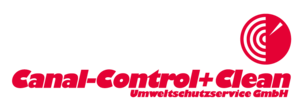
Canal-Control+Clean Umweltschutzservice GmbH was founded in 1983 and has been family-run ever since. Comprehensive sewer-related services are offered. These include sewer inspection, sewer cleaning and leak testing as well as the rehabilitation of drainage pipes.
More than 400 employees at 8 locations ensure the maintenance of the sewer system in northern Germany with the company's own own fleet of over 255 special vehicles.
